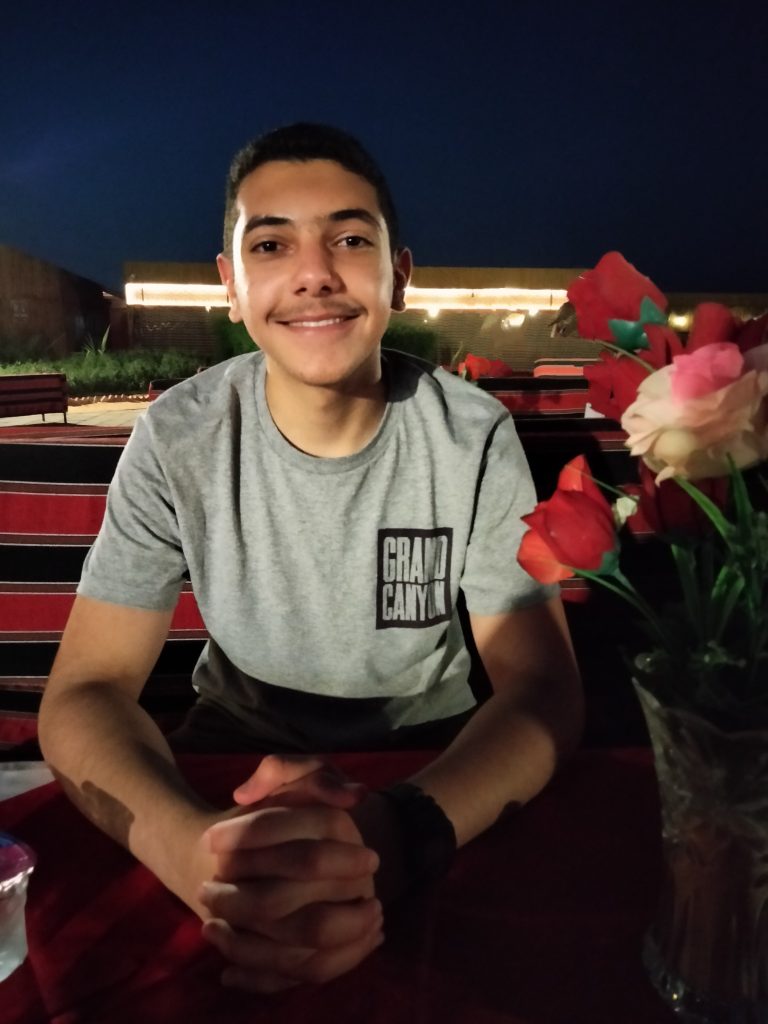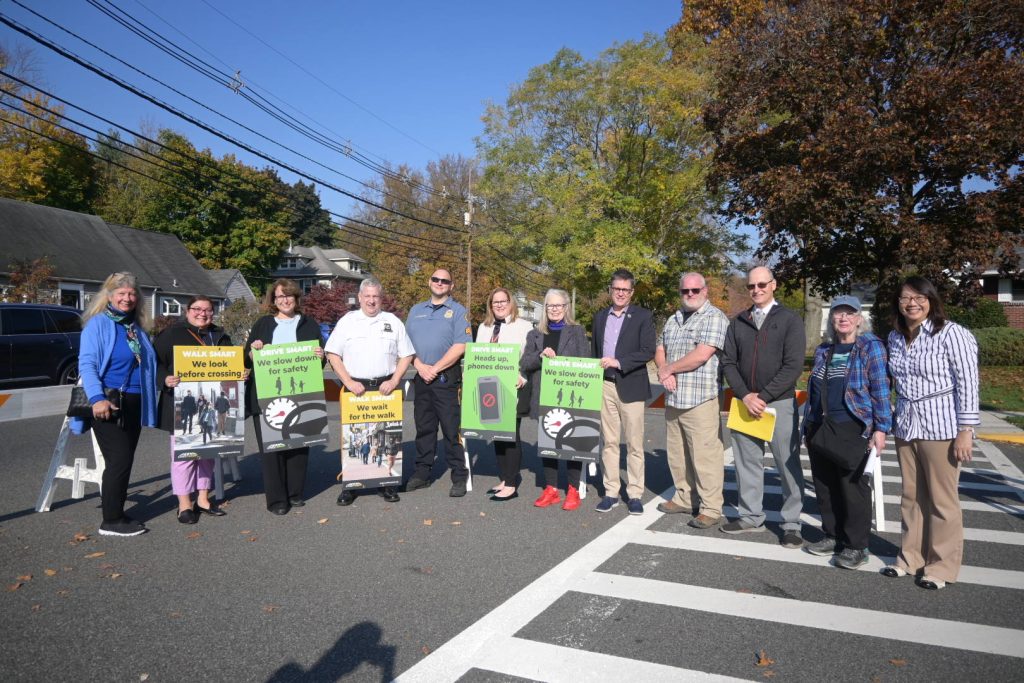This article is a reprint from the April, 2025 edition of the Ridellion Reporter at River Dell High School in Oradell, NJ, written by student Abdullah Elzawawy.It explores his experiences and contributions to addressing Complete Streets and Safe Routes to School. Reprinted with the author’s permission.
is a reprint from the April, 2025 edition of the Ridellion Reporter at River Dell High School in Oradell, NJ, written by student Abdullah Elzawawy.It explores his experiences and contributions to addressing Complete Streets and Safe Routes to School. Reprinted with the author’s permission.
How a YouTube Rabbit Hole Led Me to Fight for Safer Streets in My Community
by Abdullah Elzawawy, Ridellion Reporter
It was sometime during the never-ending void that was the COVID lockdown. I had practically melted into my leather couch, my eyes tired after another day of staring at the same four walls. At this point, YouTube had become my escape. Its sea of content drowned me in an algorithm that pulled me deeper into random niches I never knew existed. I had already cycled through the usual compilation videos, cooking tutorials I would probably never attempt, and random deep dives into the history of obscure countries. That was when I stumbled upon Not Just Bikes. It was a channel run by Jason Slaughter, a Canadian man who had recently moved to the Netherlands and would not shut up about how great their cities were. His thumbnails seemed appealing enough; they were a break from the endless tide of the overly contrasted clickbait maximalism that sucked the last bits of life out of me. I clicked on one video. Soon enough, I clicked on another. Then another. And another.
Before I knew it, I was watching footage of Dutch streets that looked nothing like the ones I and other Americans grew up with—wide sidewalks, bike lanes that were not just afterthoughts, roundabouts that actually served their intended function, and smarter traffic lights that judged off a congestion sensor instead of a timer. I found myself interested. Then captivated. Then annoyed; why don’t we have this here?
At first, I brushed it off as just another “whatever” niche. Cool urban and road design? Sure. But was I really going to do anything with it? Probably not. This was just another stream of videos that proves just how truly underdeveloped genuinely underdeveloped America is despite it being such a grand superpower.
I only kept an interest in traffic design since I could finally put my finger on why I hated being driven to school. It indeed was not how my parents drive (although my mother can be aggressive at times). It was more about the design. Who knew funneling so many cars on Fifth Avenue was a bad idea? Who knew middle school parents merging onto Fifth simultaneously with the high school arrival time was also a bad idea? Who knew having wide roads makes people speed well beyond the posted limit? Surely, someone must have put effort into this. Even still, I didn’t put much real thought into it. My traffic redesign ideas were merely topics I would bring up regularly at the dinner table or when we were stuck in traffic.
I kept my ideas on the backburner until my older sister and my teacher, Dr. Chu, convinced me otherwise. I had just started my Science Research class, and they both knew I could dig into this for my research project. I figured I had nothing to lose.
I took my sister and Dr. Chu’s advice but immediately ran into a wall: finding a professional mentor to guide me. Looking back, I truly was trying to sprint to win a marathon before I learned how to walk. I was doing a scavenger hunt of Dutch professors from The Netherlands and shooting emails left and right, just to be left on ‘read’ or given a polite rejection. It was frustrating, and I thought that was the end of it.
Fast forward to last summer: I emailed a professor from Rutgers, and would you look at that? A response from one of their PhD staff in less than a week. I met Dr. Hannah Younes in August and showed her what I found. I specifically pointed out my interest in the intersection at Grant and Oradell Avenue in Oradell: an intersection that was notorious for accidents and traffic. I showed her my ideas stemming from what I learned during my research on Dutch road design throughout the year. I presented Dr. Younes with a half-baked PowerPoint with my scribbles showing what the intersection would look like with more pronounced curbs, pedestrian bump outs, and maybe a mini roundabout. Somehow, she was enthralled. She found it exciting to see someone, especially of my age, interested in something like this. She even went out of her way to connect me with EZ Ride, a state transportation organization.
From there, I was even contacted by the co-founders of Bergen County Complete Streets, Chris and Pat. We have attended two town council meetings, both centered around one major issue: making the intersection at Grant and Oradell Avenue safer.
At our first meeting in October, we pushed for immediate awareness, which led to a kick-off event at the notorious intersection, with signage alerting drivers and pedestrians about safety concerns in hand.

We received great feedback from the event. But awareness was not enough: we needed hard data. So, I created a survey, first distributing it to River Dell juniors and seniors who drive, then expanding it to Oradell and River Edge’s community page. The response was overwhelming. Over 160 people participated, sharing their concerns and experiences.
I then met with a councilman one-on-one to discuss our efforts. That meeting helped shape my approach for what was to come. Armed with data and approval, we prepared for the second council meeting.
And that was how I found myself in what I can only describe as one of the most grueling town council meetings known to mankind. Imagine sitting in a stiff, cold metal chair under the overwhelming beam of bright lights, surrounded by people quadruple your age, listening to monotone discussions about your town’s budget or recent events that seem to drag on for eternity. Every once in a while, you could hear a cough, the shuffle of papers, the occasional throat clearing, or that sniffle sound people make when they are just mildly congested. One whole hour had already passed before I could stand before the mayor and council.
When I finally got to speak, I presented the results of the traffic survey. To my surprise, the council actually listened. We presented the consideration for adopting the Complete and Green Streets Policy. This policy would act as a framework for municipalities to make real safety improvements and, more importantly, make it easier to secure grant funding for infrastructure projects.
After that meeting, a different councilman approached me, showing particular interest in what we were doing. They asked questions, wanted to learn more, and seemed genuinely invested in the possibility of making changes. It was a sign that our work was gaining traction.
As much as we worked with our local council, I sought to also investigate what neighboring towns were doing. I recently had the opportunity to virtually meet with high schoolers from Fort Lee High School, Henry DeJesus and Abigail Lee, with the same interests as me, and we are now sharing resources and strategies to push for safer streets in our towns. We are also looking to launch a youth division within Bergen County Complete Streets—one specifically for Gen Z. The goal? To create a network where students from different towns can collaborate, share what works, and support each other. We will be launching social media accounts and a potential server where anyone can join the movement. If one town successfully implements a safety policy, we can use that as proof to convince other towns to follow suit.
Looking back, it is surreal to think that all of this started with me mindlessly scrolling through YouTube during COVID boredom. Even though our efforts are still technically on a local level, the more people involved, especially from younger generations, will only cause us to grow from here.
And if that means sitting through more town council meetings, then so be it.
